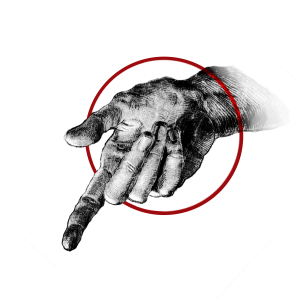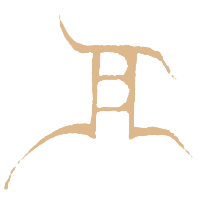I recently read a blog post entitled “A Refuge of Authenticity” by Hadden Turner, concerning the plight of human art in the coming age of “artificial intelligence.” This piece — which I highly recommend, along with his other essays — offers a practical and elegant solution to the problem of post-AI artistic integrity: namely, “Refuges of Authenticity,” places where one can find art that is free from the paralyzing touch of AI and computerized automation. Or, in the words of the author, “places people can come to be exposed to real art, real writing, and real thoughts that have been mulled over, stewed in the mind, and debated before being put to paper.”
In full solidarity with his proposal, I here proclaim my own site one such “Refuge of Authenticity.”
I would like to offer a few reflections complementary to his own, as well as related suggestions on how we artists might move forward in the midst of the swift, unnerving, and unpredictable changes presently afoot. (For anyone who wishes to skip straight to the pragmatic, you will find it in the penultimate section of this piece.)
~
It seems right to me before anything to measure our problem by its proper dimensions. There is, and has long been, both excessive anxiety and excessive hype surrounding the idea of artificial intelligence. The notion that human beings might be transformed into gods by virtue of human science is fundamentally absurd. Likewise the vision of a bleak dystopian future in which autonomous and superintelligent computers rule mercilessly over a slave-race of devolved human beings. The robot can never replace the man; the simulacrum can never substitute the source. The machine can never become intelligent, not to speak of divine. And human nature, while it can be effaced or defaced, can never be transposed into anything beyond the boundaries of its God-given potentialities.
Yet it is equally true that the full capacity of these new AI systems is largely untried and unknown, and that the economic motives for pushing them to their utmost limit are too sumptuous for our amoral neoliberal order to resist. Godless men have cast the whole of their mundane hopes into the lap of soulless, robotic pseudo-divinities, and they will stop at nothing (for they honestly believe they have nothing to lose) to see their insane dreams realized. In short, our contemporary society will soon have to come painfully to terms with its vicious incontinence. The economic, political, social and psychological consequences of our reckless gambit have only begun to make themselves felt; it is entirely likely that a time of unrest, and perhaps great upheaval and terrible destruction, awaits us in the coming decades.
Then let us orient ourselves now, at this still early day.
We artists are facing a trying and uncertain future. Already before the advent of ChatGPT and its kin, the artistic market was overrun. Writers, songwriters, painters, musicians, sculptors, photographers, and every other kind of artistic métier faced, not a flood of competition (for most of what is produced in all these fields nowadays is mediocre at best), but rather such an unearthly din that the clean clear voice of dedicated talent and God-given inspiration were becoming progressively harder to discern. This was somewhat ameliorated by the enlargement of our potential audience and the unprecedented outreach granted us by the internet. But now that anyone under the sun can use novel “AI programs” to manufacture “artistic works” almost at the push of a button, the tremendous racket surrounding us seems to grow daily more deafening.
It is thus a matter not only of survival, but above all of dignity and honor, that all artists who have been called to their art by a true vocation should stand together in a common cause and a single voice, rejecting the lure of these new technologies, and promising to each other and to our followers and patrons that we will maintain our authenticity in the face of this new technological revolution — that our productive spheres will be and will remain, to once again use Hadden Turner’s fine phrase, Refuges of Authenticity.
In this spirit, I hereby vow that all my writing will remain free from the least “contribution” from artificial intelligence” or its subsidiaries. I affirm that art in its full sense and dignity cannot be so much as reproduced by robots or machines, much less spontaneously created by the same. Art is the fruit of moral sensitivity combined with mortal perception. It is the work of organic intelligence at work in the world — of an entire emotional and intellectual and spiritual matrix that is essentially, exclusively, and necessarily human. The artist, at his best, is transcendent; the machine, at its best, is specious. In the artist’s work, we commune with the heights of our human promise; but in the arid byproducts of digital programming, that promise itself grows narrower and more robotic. Absent the full character, experience, history, worldview, and vitality of the artist, there can be no art — only necrotic simulation.
I stand by my fellow artists against the machine, and commend myself and my readers to whatever natural gifts God has given me.
~
I want to offer, in closing, two simple practical suggestions. I believe it is right and fitting that any artist who adheres to the idea of Refuges of Authenticity (or to similar and parallel ideas) should declare his stance, publicly and clearly. It is something of a custom nowadays to include on every website certain common features, like an About page, a Privacy page, etc. Why not, then, also a Statement of Authenticity page, in which each of us lays out, in detail and full candor, the precise nature of his work, and the degree to which technology has played a role in its elaboration? I have published a simple model on my website (also accessible under the “Author” tab at the header). I welcome any comments, amendments or suggestions on it here below.
Furthermore, it seems to me that the easiest and swiftest way of communicating the idea of a Refuge of Authenticity would be via some common and easily recognizable symbol. As an example of what I mean, I propose the following image. The hand is taken from a study by Albrecht Dürer; it seems to me right to mark artistic authenticity with the work of a great and truly authentic artist.

If some cannier and more capable graphic artist would like to offer something more suitable, all the better!
~
We of this second millennium have been given a golden opportunity, thanks precisely to the coming wave of “machine art,” to radically rediscover and reaffirm the profound meaning of human art — meaning which has, in our late democratic days, been obscured if not forgotten. This opportunity comes to artists and the lovers of art alike. For
He alone lives who is craftsman
or the lover of the craftsman’s art.
Otherwise man is but a beast
and lays already in corpse.1
So let us declare our alliance with all those who dedicate themselves to creating art; with all readers, listeners, and viewers whose noble work is the vital immersion in and creative integration of human art; and with the everliving human spirit in us which makes this great dance possible.
_________________________________
1 Excerpted from my poem “Things that Die.”


